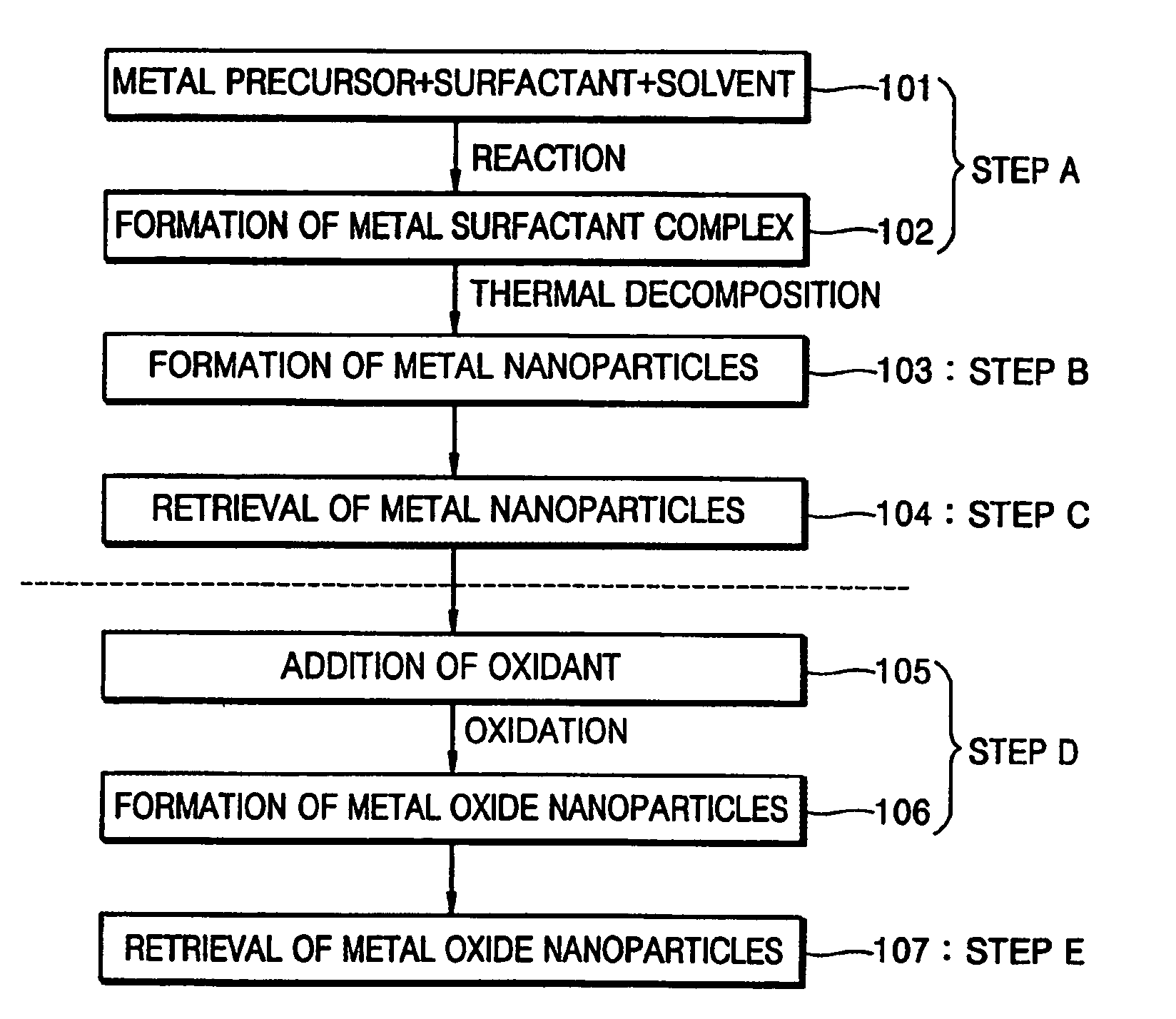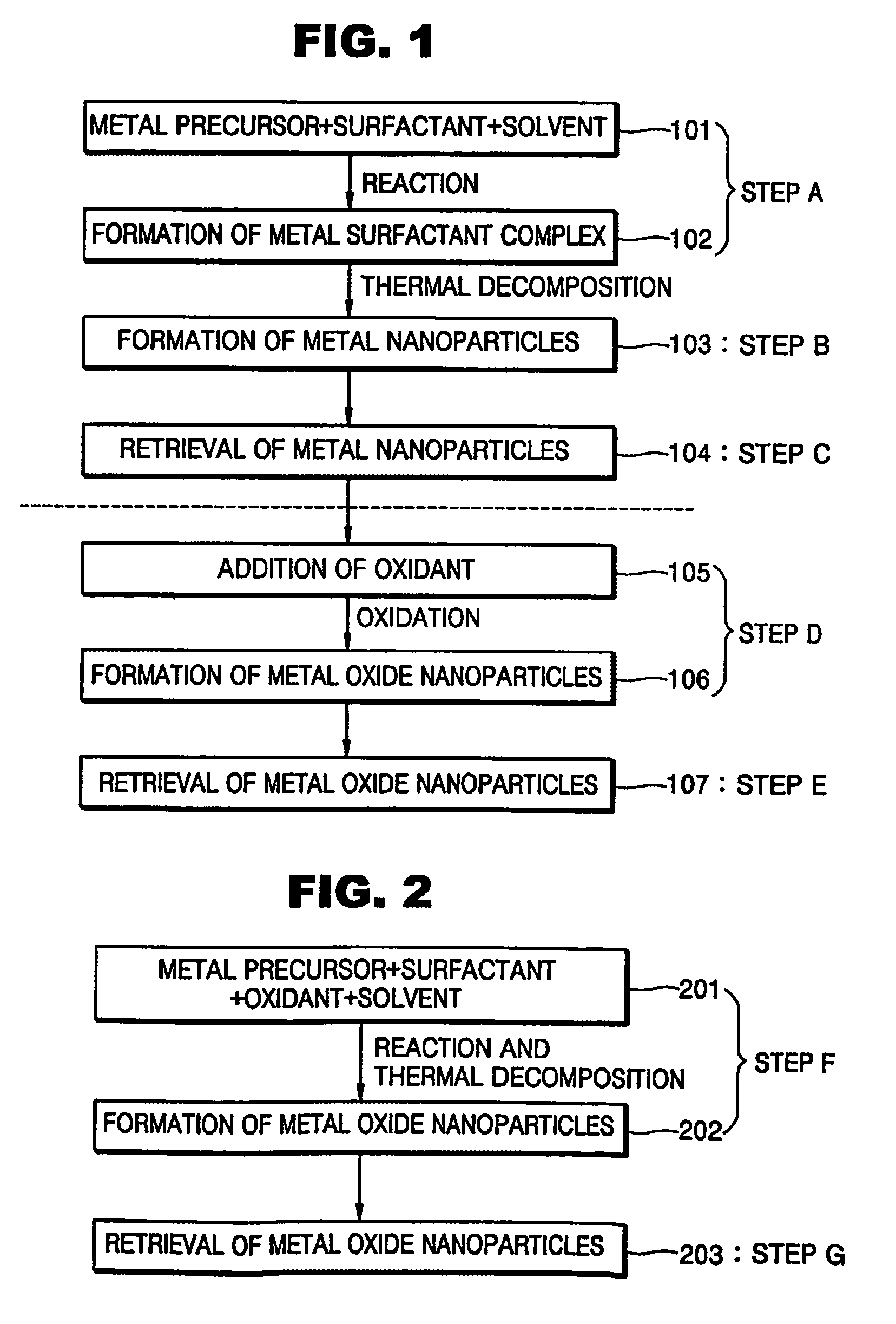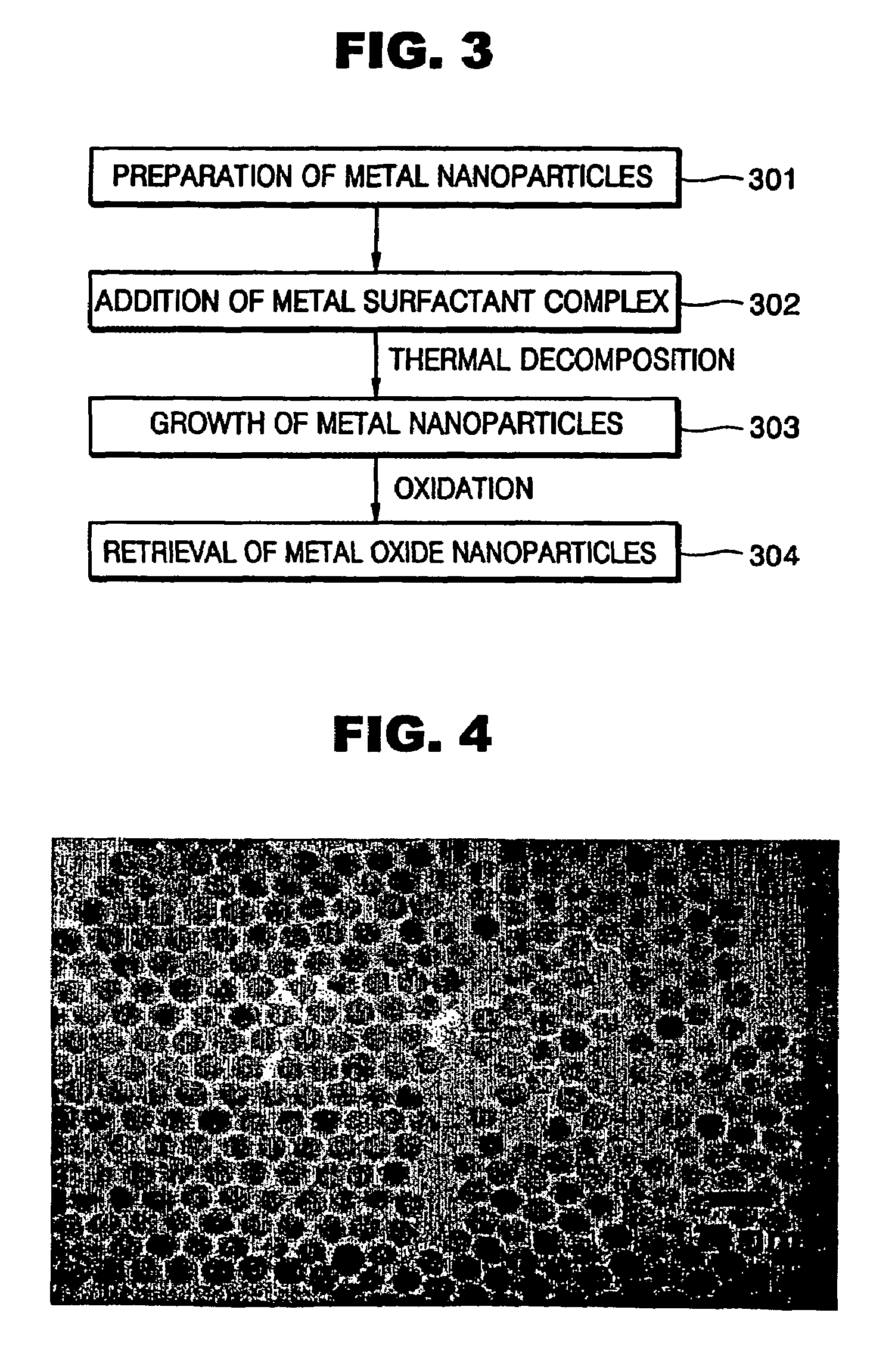Synthesis of mono-disperse and highly crystalline nano-particles of metals, alloys, metal-oxides, and multi-metallic oxides without a size-selection process
a nanoparticle and monodisperse technology, applied in the field of synthesizing monodisperse and highly crystalline nanoparticles of metals, multimetallic alloys, monometallic oxides and multimetallic oxides without a sizeselection process, can solve the problems of inability to synthesize monodisperse magnetic nanoparticles, inability to produce nanoparticles using these synthetic methods, and inability to meet the requirements of magnetic properties, etc., to achieve good magnetic properties
- Summary
- Abstract
- Description
- Claims
- Application Information
AI Technical Summary
Benefits of technology
Problems solved by technology
Method used
Image
Examples
embodiment 1
Synthesis of Monodisperse and Spherically Shaped Iron Nanoparticles
[0054]As a first exemplary embodiment of synthesizing monodisperse and spherically shaped iron nanoparticles according to the present invention disclosed here, 0.2 mL of iron pentacarbonyl[Fe(CO)5] was added to a mixture containing 10 mL of dehydrated octyl ether and 1.25 g of oleic acid under inert atmosphere, and heated the resulting mixture at 110° C. to obtain an iron-oleic acid complex, where the resulting reactant mixture was heated to reflux and was aged for 1 hour at the reflux temperature. During this process, the iron pentacarbonyl[Fe(CO)5] was thermally decomposed completely, and iron atoms were generated. The resulting solution was cooled to room temperature, and ethanol was added to yield a black precipitate, which was then separated by centrifuging. The resulting supernatant was discarded. After repeating this washing process at least three times, the ethanol contained in the remainder was removed by va...
embodiment 2
Synthesis of Monodisperse and Spherically Shaped Iron Oxide Nanoparticles-1
[0055]In order to synthesize monodisperse and spherically shaped iron oxide nanoparticles of 7 nm in diameter according to the present invention, similarly to the procedure described in Embodiment 1 above, 0.2 mL of iron pentacarbonyl [Fe(CO)5] was added to a mixture containing 10 mL of dehydrated octyl ether and 1.25 g of oleic acid under an inert atmosphere and the resulting mixture is heated at 110° C. to form an iron-oleic acid complex. The resulting reactant mixture was heated to reflux and aged for 1 hour at the reflux temperature. During this process, Iron pentacarbonyl[Fe(CO)5] was thermally decomposed completely and iron atoms were generated. In order to obtain monodisperse and spherically shaped iron oxide(maghemite, γ-Fe2O3) nanoparticles, the resulting red colored solution was cooled to room temperature. Then, 0.36 g of trimethylamine N-oxide, an oxidant, was added, and the resulting black colored...
embodiment 3
Synthesis of Monodisperse Spherical Iron Oxide Nanoparticles-2
[0056]Monodisperse spherical metal oxide nanoparticles of 7 nm in diameter were synthesized using the same reaction conditions described in Embodiment 2, except that the amount of the surfactant used is reduced to 0.85 g. An exemplary TEM image of the 7 nm spherical iron oxide nanoparticles synthesized according to the present invention is as shown in FIG. 8, indicating that the 7 nm spherical iron oxide nanoparticles are monodisperse.
PUM
| Property | Measurement | Unit |
|---|---|---|
| temperature | aaaaa | aaaaa |
| temperature | aaaaa | aaaaa |
| size | aaaaa | aaaaa |
Abstract
Description
Claims
Application Information
 Login to View More
Login to View More - R&D
- Intellectual Property
- Life Sciences
- Materials
- Tech Scout
- Unparalleled Data Quality
- Higher Quality Content
- 60% Fewer Hallucinations
Browse by: Latest US Patents, China's latest patents, Technical Efficacy Thesaurus, Application Domain, Technology Topic, Popular Technical Reports.
© 2025 PatSnap. All rights reserved.Legal|Privacy policy|Modern Slavery Act Transparency Statement|Sitemap|About US| Contact US: help@patsnap.com



